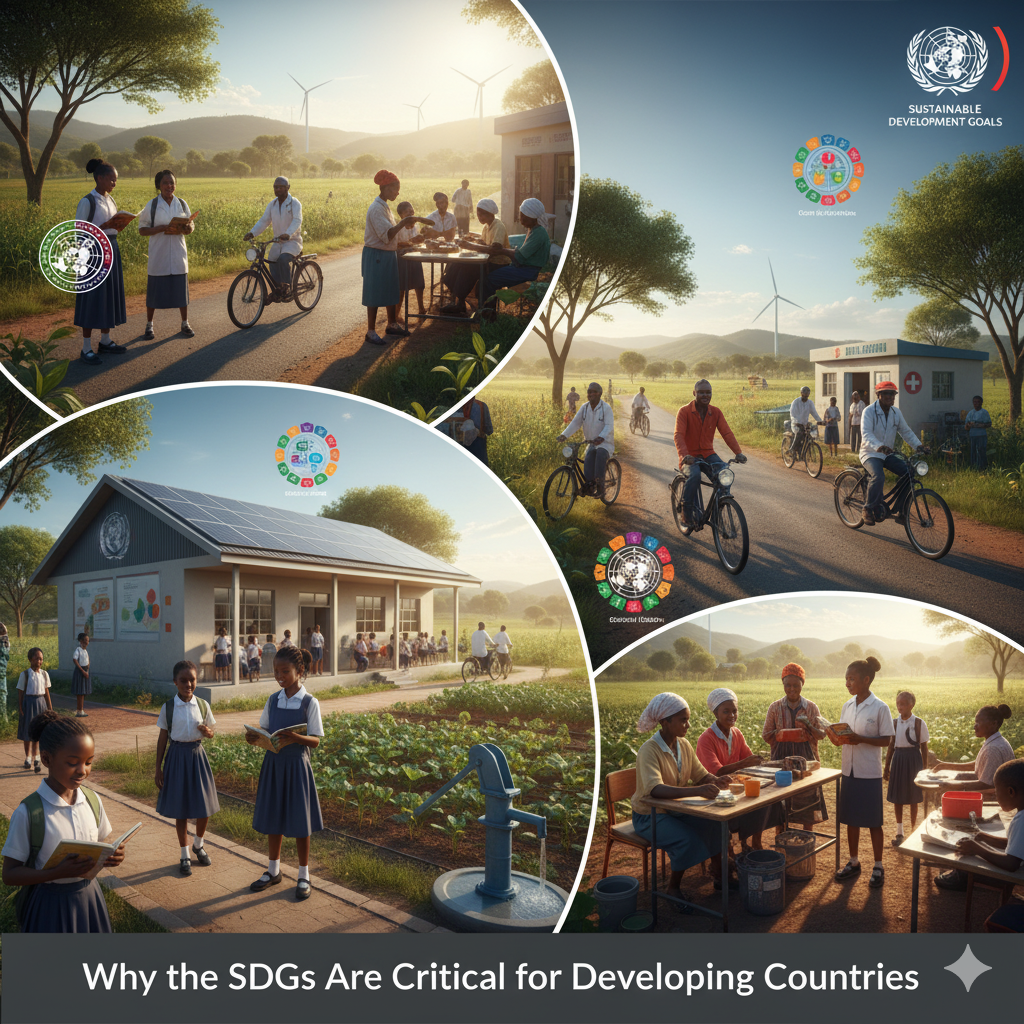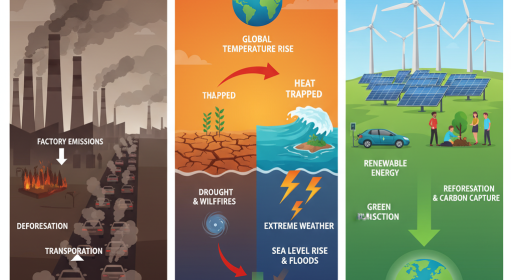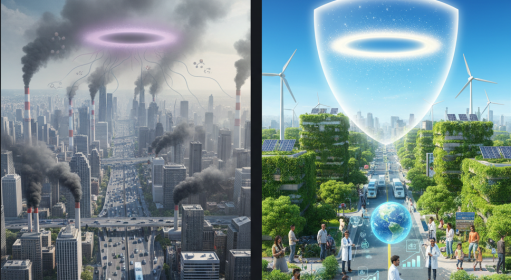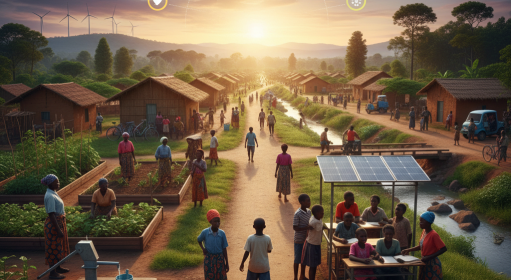In 2015, the United Nations launched the Sustainable Development Goals (SDGs) as a global roadmap to address poverty, inequality, environmental degradation, and climate change. These 17 interconnected goals are the backbone of the 2030 Agenda for Sustainable Development, signed by 193 countries.
The SDGs matter because they set a clear vision: a world where economic growth does not come at the cost of the planet, where no community is left behind, and where human dignity is protected. For developing countries especially, the SDGs present not just a framework for survival but a blueprint for a green, resilient, and inclusive future.
Understanding the 17 SDGs
The 17 SDGs can be grouped into five categories: People, Planet, Prosperity, Peace, and Partnership.
- No Poverty: End poverty in all forms everywhere.
- Zero Hunger: Ensure food security, nutrition, and sustainable agriculture.
- Good Health and Well-being: Promote healthy lives and well-being for all ages.
- Quality Education: Ensure inclusive and equitable education.
- Gender Equality: Achieve equality and empower all women and girls.
- Clean Water and Sanitation: Universal access to safe water and sanitation.
- Affordable and Clean Energy: Ensure sustainable and modern energy access.
- Decent Work and Economic Growth: Promote inclusive and sustainable economic growth.
- Industry, Innovation, and Infrastructure: Build resilient infrastructure and foster innovation.
- Reduced Inequalities: Reduce inequality within and among countries.
- Sustainable Cities and Communities: Make cities inclusive, safe, resilient, and sustainable.
- Responsible Consumption and Production: Ensure sustainable use of natural resources.
- Climate Action: Combat climate change and its impacts.
- Life Below Water: Conserve and sustainably use oceans and marine resources.
- Life on Land: Protect, restore, and promote sustainable ecosystems.
- Peace, Justice, and Strong Institutions: Promote peaceful and inclusive societies.
- Partnerships for the Goals: Strengthen global partnerships for sustainable development.
Each goal is interconnected. For example, clean water (Goal 6) supports good health (Goal 3), while sustainable cities (Goal 11) reduce poverty (Goal 1) and inequalities (Goal 10).

Why the SDGs Are Critical for Developing Countries
Developing countries face unique challenges: rapid urbanization, unemployment, weak infrastructure, and vulnerability to climate change. The SDGs are critical because they:
- Provide international funding pathways: Access to global climate finance, green bonds, and aid.
- Offer a framework for governance reforms: Encouraging transparency and accountability.
- Promote innovation and local solutions: From solar power in rural Africa to microfinance in South Asia.
- Balance growth and environment: Ensuring economic progress does not destroy ecosystems.
For countries like Nigeria, Bangladesh, or Kenya, the SDGs represent a chance to leapfrog into a greener future without repeating the environmentally damaging models of the past.
Notable Sustainable Cities Around the World
One of the most practical illustrations of SDG success is the rise of sustainable cities.
- Copenhagen, Denmark: On track to become the world’s first carbon-neutral capital by 2025. It relies on renewable energy, bike-friendly infrastructure, and waste-to-energy plants.
- Singapore: Known as a “City in a Garden”, it has invested heavily in water recycling, vertical greenery, and smart mobility solutions.
- Kigali, Rwanda: An African example of cleanliness and sustainability, banning plastic bags, promoting public transport, and investing in green growth.
- Curitiba, Brazil: Famous for its integrated public transport system and sustainable urban planning.
- Stockholm, Sweden: A leader in renewable energy adoption and eco-district development.
These cities prove that with planning, investment, and innovation, sustainable urban living is possible.
Opportunities for Developing Countries
- Renewable Energy Expansion: Africa has 60% of the world’s best solar resources but only 1% of installed capacity. Scaling solar and wind energy could electrify millions sustainably.
- Climate-Smart Agriculture: Adopting drought-resistant crops and precision farming techniques to ensure food security.
- Digital Transformation: Leveraging mobile banking, e-governance, and AI-driven solutions for efficiency.
- Green Jobs: Investing in recycling, renewable energy, and nature restoration creates employment while protecting the environment.
Barriers and Challenges
Despite opportunities, progress is slowed by:
- Financing gaps – Trillions are needed to achieve SDGs globally.
- Weak governance – Corruption and mismanagement of resources.
- Urbanization pressures – Overpopulation and slum development in cities.
- Climate change impacts – Droughts, floods, and cyclones hitting vulnerable regions hardest.
A Green Future Is Possible
The SDGs are not dreams, they are achievable pathways. With political will, community action, and international support, a greener and fairer future is possible.
- Governments must integrate SDGs into national policies.
- Citizens must hold leaders accountable.
- Businesses must adopt sustainable models.
- Youth must continue to push for climate justice and green innovation.
The Sustainable Development Goals are humanity’s promise to itself, a commitment that no one should be left behind, and that development should not cost the earth. For developing countries, the SDGs are more than global targets; they are lifelines toward a greener, more equitable future. If Copenhagen, Kigali, and Singapore can become models of sustainability, so too can cities in Africa, Asia, and Latin America. The journey is challenging, but the possibility of a green future is real if we act now.




